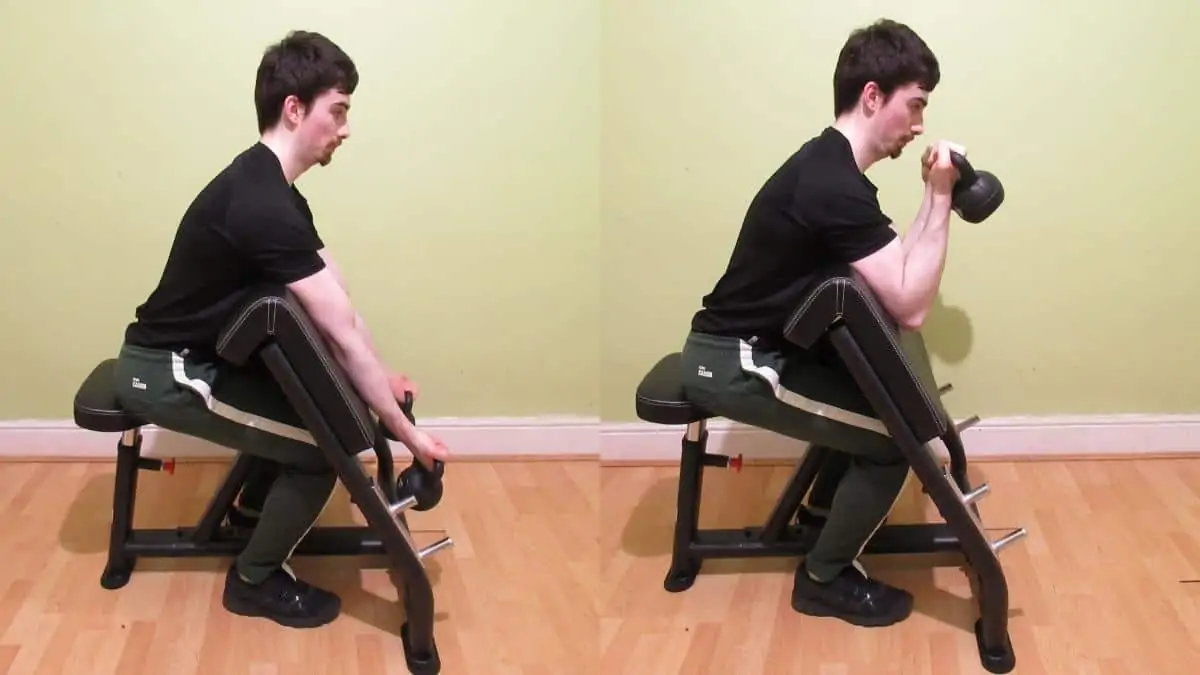There are many ways that you can train the bicep brachii to enhance its appearance. Few lifters, however, realize that performing kettlebell curls over the preacher pad is a viable way to do just this.
Unlike regular bicep preacher curls, kettlebell preacher curls are a unique exercise that’s rarely performed in the gym. But just because most people are accustomed to lifting dumbbells doesn’t mean that kettlebells don’t have their place in the preacher curl drill.
Kettlebell preacher curl exercise details
- Main Muscles: Biceps brachii
- Secondary Muscles: Brachioradialis, brachialis, forearm flexors
- Exercise Type: Strength
- Exercise Mechanics: Isolation
- Difficulty Level: Beginner
- Equipment Needed: Kettlebell, preacher pad
How to perform kettlebell preacher curls
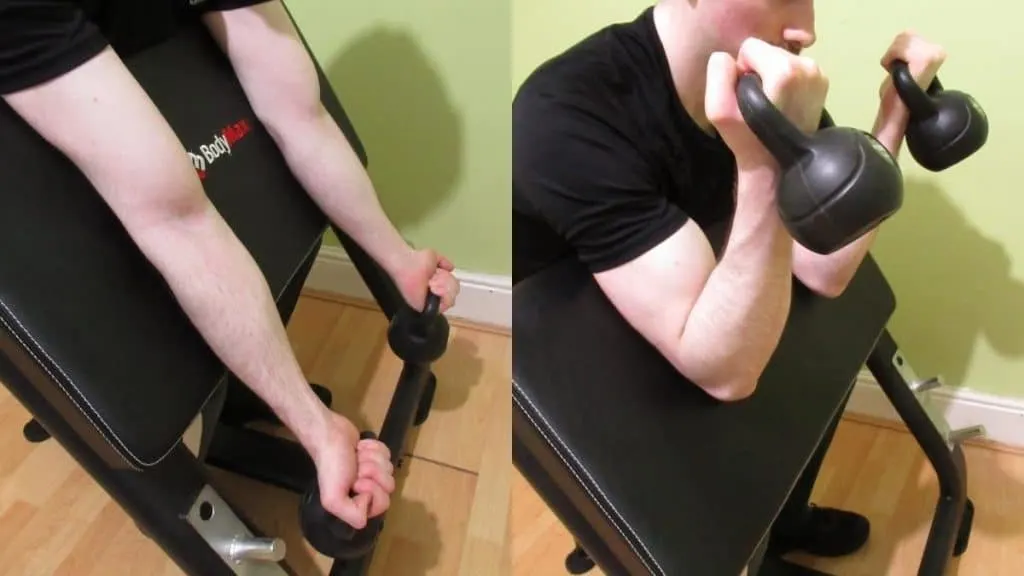
- Hold a kettlebell with an underhand grip.
- Sit on the preacher curl station’s seat.
- Brace the arm that’s holding the kettlebell against the sloped side of the pad.
- Hold onto the top of the padding with your other arm for stability.
- Curl the weight toward your shoulders.
- Contract your bicep as it squeezes up against your forearm.
- Slowly lower the weight until your elbow is completely extended.
- Repeat the exercise for your other arm.
- Perform 3-4 sets of 8-12 reps per arm.
Kettlebell preacher curl advantages
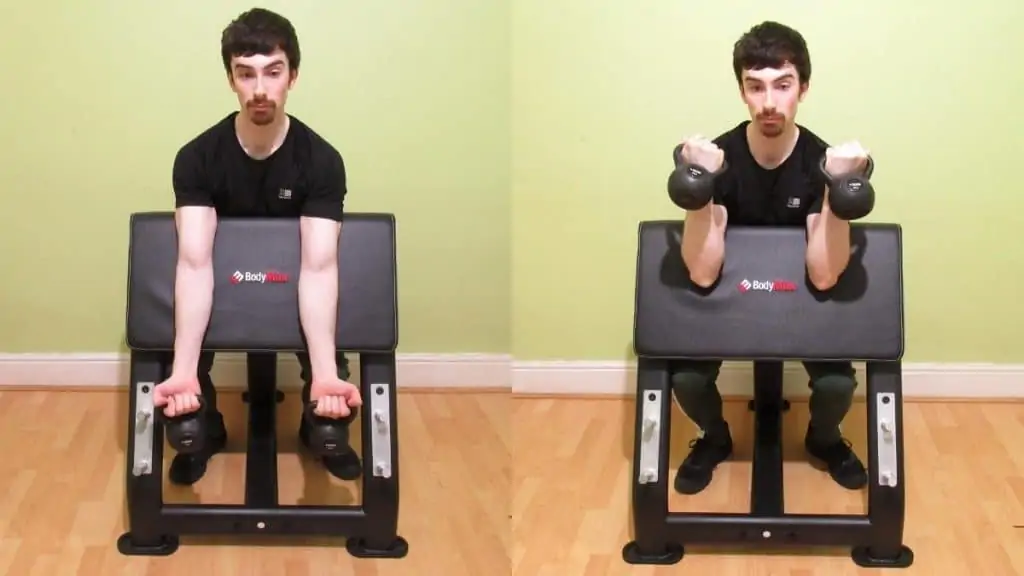
Many gym-goers become dogmatic by claiming that dumbbells and barbells are the only viable training tool. While there’s nothing wrong with using such equipment, it’s important to realize that kettlebells hold some distinct advantages over traditional weight lifting apparatus due to their convenient design.
Easier to grip
Kettlebells are more straightforward to grip than dumbbells because there’s a gap between the handle and the weight. This means that you can focus more attention on blasting your biceps rather than figuring out how to best hold the bell.
Less forearm activation
Compared to doing preacher curls with bands, which require a firm grip, kettlebell preacher curls demand less forearm strength because the weight is behind your hand. Moreover, simply resting the kettlebell in your palm is enough to maintain a strong hold on it—there’s no need to grip the bell too tightly.
As such, your forearms won’t give out at the expense of your biceps, which results in better upper arm stimulation.
Strong mind-muscle connection
Preacher curls are a great exercise to include in your kettlebell bicep workouts because they enable you to train each arm independently. This unilateral training style can help to fix your muscle imbalances and reduce the strength discrepancies between your biceps.
Similarly, working each arm separately allows you to hone in on each bicep in order to achieve the best possible stretch and contraction. This results in a more powerful muscle pump that will enhance the appearance of your arms while you’re training.
Kettlebell preacher curl disadvantages
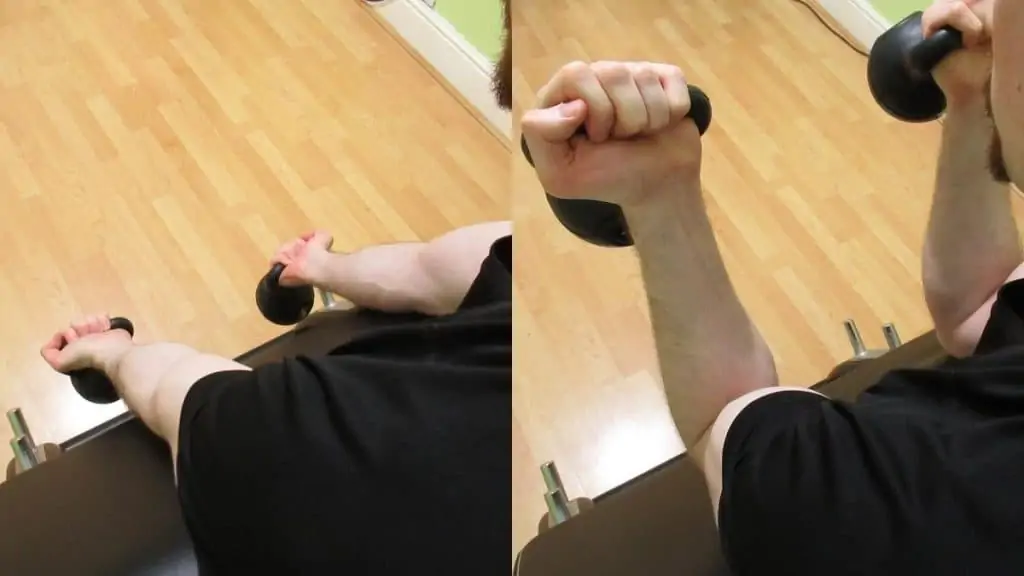
As valuable as kettlebells are for building the biceps, there are still some drawbacks to using this training tool that you need to consider if you want to gain strength and muscle mass on a consistent basis.
Reduced range of motion
As mentioned, the weighted part of the kettlebell will be behind your hand when you hold the weight. This is fine in and of itself, but it can be a big problem if you have short arms or are using a long preacher pad.
This is so because the kettlebell may hit the padding before you achieve a full biceps stretch. Of course, this means that you’ll also receive reduced bicep stimulation compared to what you’d get from using a full range of motion.
Difficult progressive overload
Not all gyms have kettlebells that ascend in manageable increments. Therefore, increasing the resistance on a regular basis can be extremely difficult if kettlebells are your primary training tool. This is especially true for a body part like the biceps, which is a comparatively weaker muscle than something like your chest or lats.
This is also an issue with exercises like the hammer kettlebell curl, where large weight jumps are simply not possible to achieve on a consistent basis.
While this lack of progressive overload is fine for maintaining your current size, you’re going to have to increase the resistance sooner or later if you want to gain new muscle mass. This may mean ditching the kettlebells if your gym doesn’t have a set that ascends in small enough increments.
Related Exercise: Spider kettlebell curl
Should you do kettlebell preacher curls for your biceps?
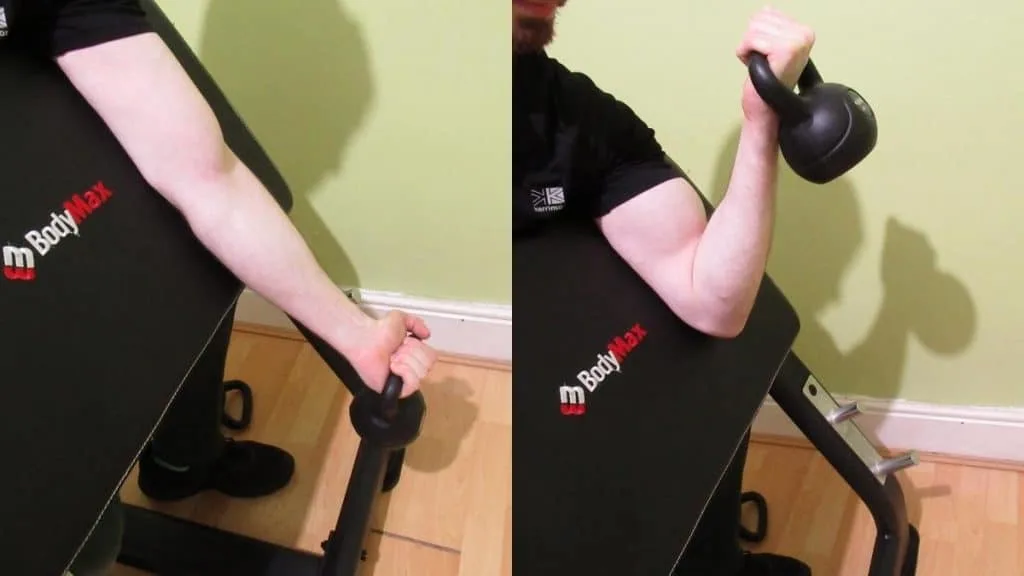
The kettlebell is a highly versatile training tool. You can hone in on each bicep by performing alternating preacher curls with kettlebells, or you can train both arms together to save time.
Kettlebells are also ideal for weight lifting beginners because they’re really easy to hold on to. This enables you to focus on training the target muscles, which in turn will help you to enjoy a more effective workout.
Stick to sets of 8-12 reps for most of your workout. There’s certainly nothing wrong with performing higher repetitions (15-20), but if you rely on low reps, then you might not get sufficient time under tension, which would leave your biceps understimulated and potentially also underdeveloped.

